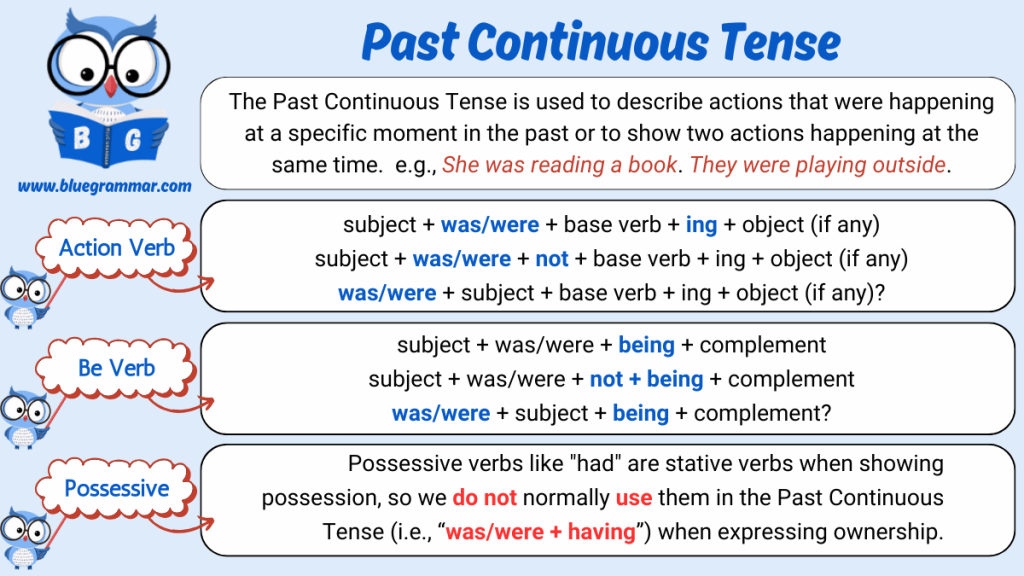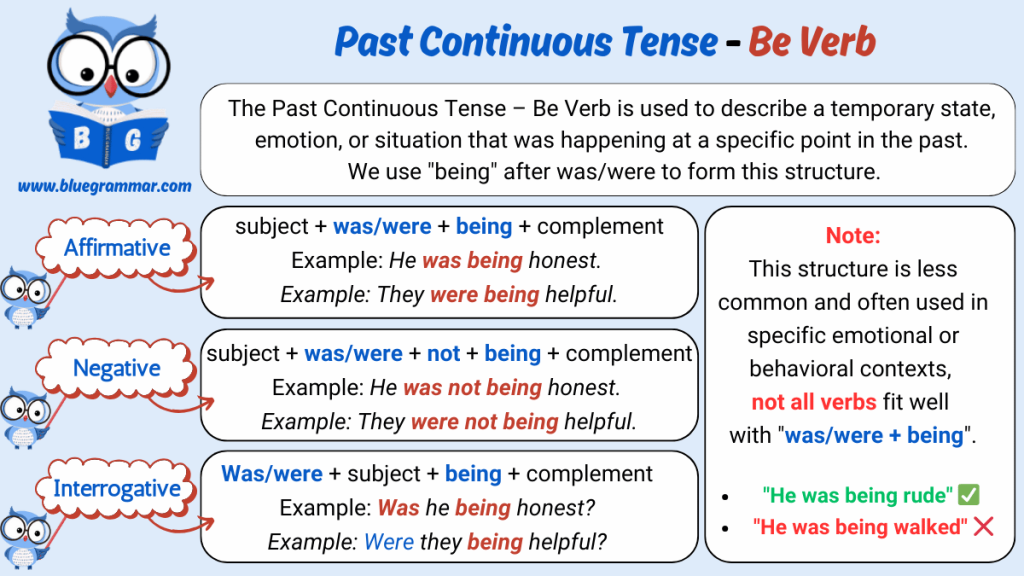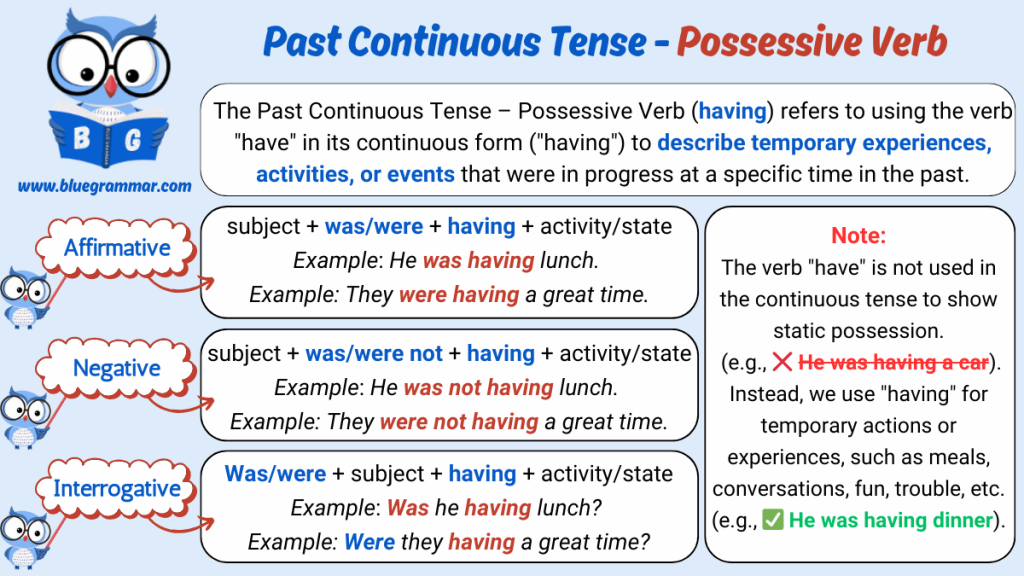
The Past Continuous Tense is used to describe actions that were happening at a specific moment or over a period of time in the past. These actions were either interrupted by another action, happened in parallel with other past actions, or simply describe what was going on at a particular time.
We use the Past Continuous:
- To describe a long action that was interrupted by a short one
- To show two actions happening at the same time
- To set the background for a story
- To emphasize the duration or ongoing nature of the action in the past
Past Continuous Tense : Action Verb
Why We Use Action Verbs in Past Continuous?
Action verbs show physical or mental activity (e.g., write, run, play, study, think). In the Past Continuous Tense, these verbs describe actions that were in progress at a certain time in the past.

Structure for Positive Sentences
Subject + was/were + verb(-ing) + object (if any)
- Use was with: I, he, she, it
- Use were with: you, we, they
Examples With Object:
- He was reading a novel in the evening.
- They were playing cricket at the playground.
- I was writing a letter when the lights went out.
- She was watching a drama on TV.
- We were studying physics for the test.
Examples Without Object:
- She was sleeping peacefully.
- I was walking alone.
- They were laughing loudly.
- You were dancing gracefully.
- He was running down the street.
Structure for Negative Sentences
Subject + was/were + not + verb(-ing) + object (if any)
Examples With Object:
- He was not doing his homework.
- They were not attending the lecture.
- I was not watching any movie last night.
- She was not cleaning the kitchen.
- We were not playing games.
Examples Without Object:
- I was not sleeping at that time.
- She was not shouting.
- They were not coming to the party.
- He was not speaking.
- You were not smiling.
Structure for Interrogative Sentences
Was/Were + subject + verb(-ing) + object (if any)?
Examples With Object:
- Was he reading a newspaper?
- Were they doing their homework?
- Was she cleaning the house?
- Were you writing a story?
- Was I answering your question?
Examples Without Object:
- Was I snoring?
- Were they crying?
- Was she joking?
- Were you waiting for me?
- Was he driving fast?
Past Continuous Tense : Be Verb
Why We Use Be Verbs in Past Continuous?
Be verbs (was being, were being) are used in the Past Continuous Tense to describe someone’s temporary behavior, state, or condition in the past. This usage shows how someone was acting at a particular moment or during a specific period of time. We do not use “was being” to describe permanent characteristics or identities.

Structure for Positive Sentences
Subject + was/were + being + adjective/complement
Examples:
- She was being very polite yesterday.
- They were being noisy during the lecture.
- He was being selfish at the meeting.
- You were being helpful throughout the event.
- I was being honest in my reply.
Structure for Negative Sentences
Subject + was/were + not + being + adjective/complement
Examples:
- She was not being rude.
- They were not being responsible.
- He was not being fair to his friend.
- I was not being serious.
- You were not being respectful.
Structure for Interrogative Sentences
Was/Were + subject + being + adjective/complement?
Examples:
- Was he being kind to you?
- Were they being honest?
- Was she being helpful during the task?
- Were you being rude?
- Was I being too strict?
Past Continuous Tense : Possessive Verb
Why Possessive Verbs Are Not Normally Used in Past Continuous?
Possessive verbs like have and has are not usually used in continuous tenses when they refer to ownership or permanent possession. That includes the Past Continuous Tense.
For example:
- I was having a car.
- I had a car.

However, “have” can be used in continuous form when it means experiencing or doing something, such as having dinner, having fun, or having a meeting — not owning something.
Correct Structure for Experiences Only
Subject + was/were + having + experience or event
Examples (Correct – Temporary Action/Experience): With Object:
- She was having lunch with her friends.
- I was having a meeting with the team.
- They were having a birthday celebration.
- We were having a serious discussion.
- He was having tea when I arrived.
Examples Without Object (Implied Meaning):
- I was having fun at the park.
- She was having a hard time.
- They were having trouble understanding the topic.
- He was having a good day.
- You were having a great time!
Incorrect Usage (For Possession):
- She was having a laptop.
- We were having a house.
- She had a laptop.
- We had a house.
Important Notes
Use Past Simple for completed past actions: “He watched TV.”
Use Past Continuous for actions that were in progress: “He was watching TV when I called.”
Don’t use continuous tense for states or ownership unless expressing temporary situations or experiences.